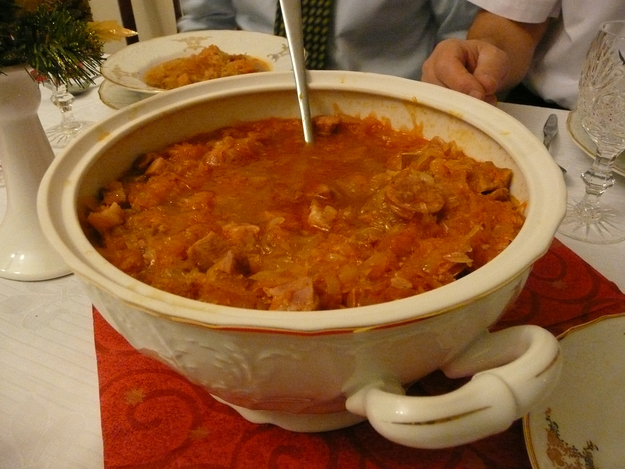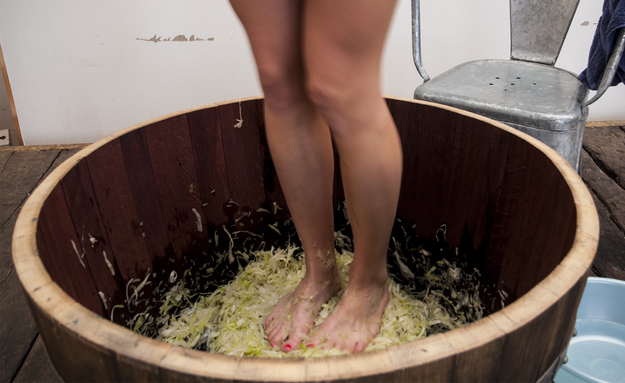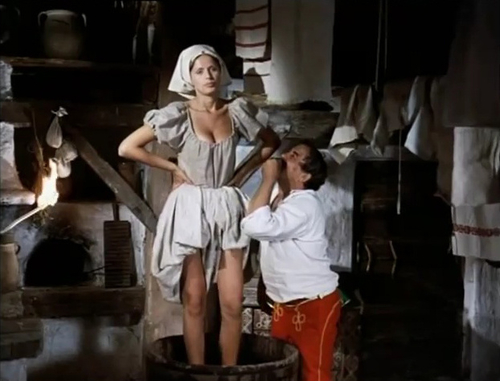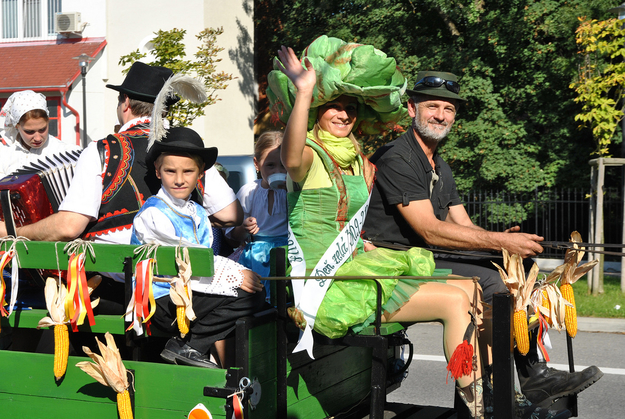Did you know?
- In the 19th century, pálenka (schnaps) was drank when planting cabbage - for the cabbage to have sturdy leaves.
- It was then sprinkled with milk - so the cabbage would become nice and white.
- If there was a pregnant woman present during the planting - the cabbage heads would grow big and round.
- On Jacob and Anne´s names days (25, 26th July) - the women went to hoe cabbage, were spinning around it, singing and conjuring: “Dneska je Jakuba, zajtra bude Anny, krúťte že sa, krúťte moje milé hlavy.“ - Today is Jacob´s, tomorrow Anne´s - twirl oh twirl my dear heads” - for the cabbage to grow strong and huge.
Dancing on Cabbage: Traditional Sauerkraut
Rasped cabbage was pressed with bare feet (it was mostly women´s privilege- the woman doing it should be heavier) into wooden barrels - with salt, bay leaves, cumin, horseradish, dill or apples, and a piece of bread wrapped in a cabbage leaf (for better fermentation). Folk songs and music were playing, as the women stepped over the cabbage to its tunes.
- Thirsty? Try sauerkraut juice! It was drank out of thirst in the 19th century.
- Feeling like a food fight with trees? -Over the Easter holidays ,on White Saturday, women would take a handful of sauerkraut and toss it under a tree - to symbolize that the season of its consumption it is over.
Cabbage and Medicine
- In the 19th century, cabbage leaves were used to heal skin disease on purulent wounds, blisters, burns. Moreover, they were used as facings with inner inflamations, angina, asthma, migraine and varicose veins.
- Sauerkraut was put on frostbites and its direct consumption helped with maintaining good immunity. Talk about a holy grail of green medicine!
Annual cabbage parties
“Dni zelá” (Green days) - annual cabbage festival in Stupava (western part of Slovakia) take place at the turn of September to October, and is held for keeping the traditions of growing a the regional variety of cabbage. Crop exhibition, craftsmanship fair , “kapustnica” (traditional cabbage soup) competitions, handicrafts, ceramics display and live music all undoubtedly belong to the festival, which ends in fireworks.
Kapustnica (traditional cabbage soup)
Perhaps the most famous Slovakian cabbage meal made from sauerkraut, it varies from region and cooking period divides it on lent and festive. For the lent catholic Christmas Kapustnica (on Christmas Eve) meat is not included - it is thickened by adding cream and potatoes. In the festive version of Kapustnica, smoked meat and wurst can be found. Dried mushrooms and plums are a must have in either. Christmas kapustnica is traditionally made at the end of the calendar year. Regional recipes have significant differences, in each county, valley and village the christmas soup is being made differently.
A very well known Slovakian proverb goes: Kapustnica dobrá vára, ked sa naješ, riť otvára. - Kapustnica is good for your gut, when you eat it - it opens your butt


